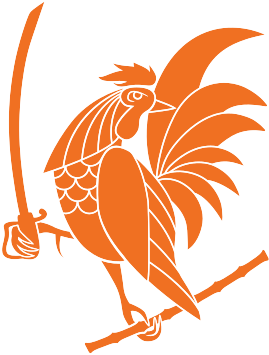I’m sure a lot of martial artists are familiar with the Japanese way of the sword: Batto Jutsu, Kenjutsu, Kendo, Iaido, and Tameshigiri. I would like to talk about the Filipino way of the sword called Bunot Armas (or Sword Drawing). What’s that? You’ve never heard of it? Well me neither until I started practicing it back in 2006.
After training Iaido for some time, I started asking my instructors if a similar practice existed in Filipino martial arts. Most of them said no, citing the fact that most Filipino swords had “break-away” scabbard technology. Meaning two pieces of wood sandwiched the sword, unglued and only tied together by rattan fibers. Warriors of the old supposedly simply struck their opponents with the sword while in scabbard and the impact caused the sword to cut through the fiber twines cutting the opponent dead! It makes sense, since it is a well known fact that Filipino sandata (weapons) went through several scabbards during its service. I thought it was a good explanation and accepted it, even though I was left kind of disappointed. How can a highly sophisticated bladed art not have something like Iaido, which offered a higher level of internal focus for the mind and body…???
Garimot Arnis System filled that emptiness in me. One day, as I was picking up Guro Abon to do a private lesson in my garage; he asked me if I’ve ever seen Bunot Armas? I knew the literal meaning…but I ignorantly asked “what’s that?”
Well let me try to describe each Japanese sword disciplines so that we can better understand Bunot Armas. Let me start with the easiest one first.
Kendo is a fencing sport with two handed bamboo sword called “shinai” and it was originally developed as a safe method of training for samurais.
Tameshigiri, literally means “test cut”, is the practice and discipline of cutting with a “ken” (live blade) or a katana sword on a bamboo pole, tatami, or both…bamboo as the core, which represents the bone, and wet tatami to represent the human flesh. Fun stuff!
Kenjutsu (Art of the Sword) is a two person practice with prescribed attacks and defenses against a sword.
Iaido is the practice of drawing the sword, cutting with the sword and returning it back into the scabbard in one fluid motion.
Batto jutsu is a combination of Tameshigiri and Iaido. It requires drawing and then an actual cutting (Tameshigiri) of a target, and return the sword back to scabbard.
Bunot Armas is basically all of the above! 🙂
Bunot Armas is the traditional sword drawing techniques of Garimot Arnis de Mano of the Baet family in Laguna, northern part of the Philippines. It teaches you higher levels of combative situations, which demands great control, decisiveness, and precise actions. It requires, undaunted stillness of the mind to perform a task. A lot of us will find this practice highly effective in dealing with stress in our work place or in our lives. I have even taught some tactics directly from bunot armas to some of our local law enforcement when they needed simple effective weapons retention techniques. So far, I have learned two sets of Garimot Bunot Armas: Cinco Teros, and Siete Colores. I wouldn’t doubt it if there was bunot armas drills for Tres Puntos, and (Garimot) Doce Pares. Guro-Dad Abon Baet likes to keep things hidden until one is ready to learn the next cool thing.
Here is a preview of the basics. This is not the actual numbering of Cinco Teros Bunot Armas. It takes a lot of practice and a proper body mechanics to perform with a “live” (sharp) blade. Please, do not try this at home. The antique sword I am using is my personal favorite cutting sword.
Click here to see sample video of Bunot Armas.
